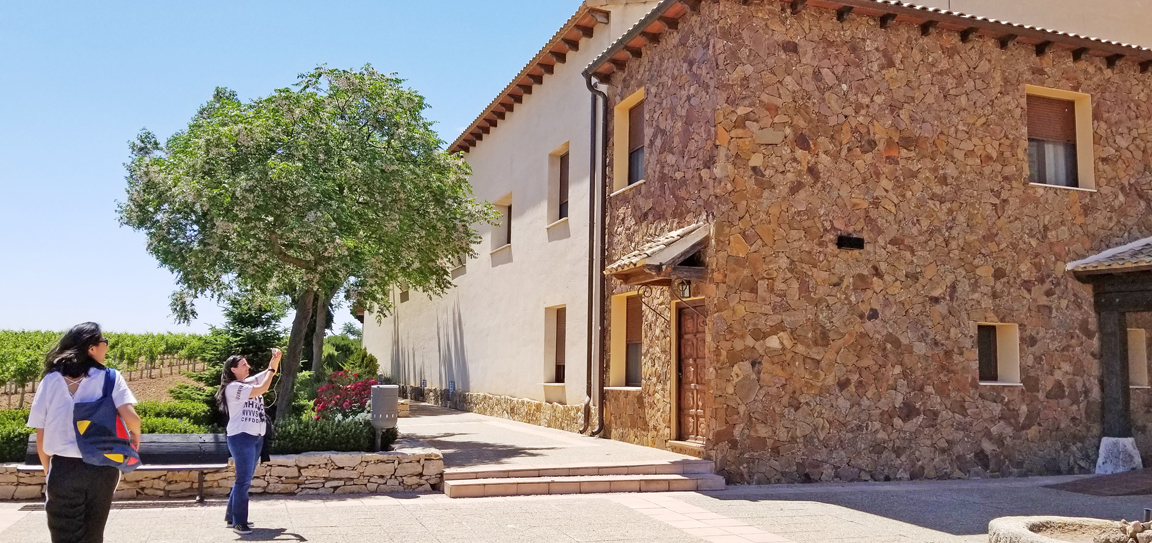Wining and Dining in La Mancha

If you have somehow found this blog while searching for reviews of Julià Travel, you are in luck. I am so bad at paring down my travel photos (or beyond the point of caring, because it’s my blog and I can do what I want) that I will be sharing not one, not two, but three blog posts on my Don Quijote Experience.
Wining and Dining in La Mancha
Belmonte Castle
Tilting at Windmills with Julià Travel
If you don’t have time to read all three posts, spoiler alert – it was a great day. I loved it. Would highly recommend this particular tour.
Planning my trip to central Spain, I ended up with a lot of little dots south of Madrid. I wanted to visit a winery and try some Tempranillo at the source. I also wanted to see the legendary windmills made famous by Cervantes in his 1615 novel, Don Quixote. I knew I wasn’t up to renting a car this go-round. I looked at a private wine tour, which was ridiculously expensive - about $500 for a day. So when I found a day trip through Viator that included wine, windmills, and more for $110 USD, I jumped on it.

That morning, I took the metro to the Opera stop and walked past the Royal Palace on my way to Julià Travel's office. (They’re the Spanish division of Gray Line Tours.) I arrived 45 minutes early, but the office was open and had vending machines, bathrooms, and some seating. In exchange for my printed reservation, I was given a color-coded ticket.
As it got close to the appointed time, groups started being called. Most people were there for a half-day trip to Toledo. (I was happy not to be among them, having seen the massive tour groups in Toledo.) Once the Don Quixote tour was called, our group of about 20 walked outside to meet our guide for the day, Paco. He spent a few moments making introductions, then led us to an underground bus lot.
Driving out of Madrid, the countryside was gorgeous, with fields of brilliant red poppies and other wildflowers lining the road. We drove past small villages, castles and monuments, fields and orchards, and one of Spain ubiquitous roadside bulls. The name La Mancha comes from Arabic, Al-Mansha, the dry land or wilderness. It’s a plateau the center of the country, an arid plain bordered by various mountain ranges. Wheat and grains, olives, and wine grapes are some of the major crops, and cattle and sheep farming are other forms of livelihood.
It took about an hour to reach our first stop. Paco talked constantly, in both English and Spanish, about La Mancha, its history, its landscape and crops, sights along the roadside, Spanish culture and language, and Cervantes and Don Quixote. (Pronouncing the latter as both "Qui-ho-tay" and "Qui-shote", and explaining why.) Later, we found out only two of us on the tour were less than proficient in Spanish, so it was nice that he continued to explain everything in English as well! We made a quick stop for drinks and bathroom breaks at a service station - I used the time to photograph some poppies growing beside the parking lot. (Paco had mentioned the flowers would disappear in the next week or two, due to the rising temperature toward the end of June.)
Monastery de Santiago de Uclés from afar
Our first stop of the day was at Belmonte, a medieval castle. I took a ridiculous amount of photos there – you see them and learn more about the castle in this post. Afterwards, we headed on to our next stop, Mont Reaga winery. One of the winery workers took over for Paco, and gave us a tour of the place.




We were given a glass of Verdejo as soon as we arrived, and were encouraged to bring it along to sip during the tour. I've visited enough wineries to know the drill, and this tour was a good one - very comprehensive. We were shown the machinery for separating and crushing the grapes, shown the tanks, the casks, even the machinery used to bottle, cork, and label. Between our host's Spanish and English explanations, she described how they make blancos and tintos, and answered several technical questions, in both languages.






The tour ended in the tasting room, where we had their vino crianza and dessert wine, Fata Morgana. The tasting room was a nice set-up, with in-table lighting so you could more carefully examine the color, clarity, and viscosity of the wine in your glass. There were plates of Manchego cheese and jamon to share. Once the tour was through, I bought a bottle of the Verdejo - it's good wine, but honestly, I purchased it mostly for the bottle and cork, which has poppies on it. Five euros!






After the winery, we headed into Mota del Cuervo for our included lunch. Side note - Mota del Cuervo has a crow statue in the middle of the roundabout, which made me unreasonably happy. We ate at Restaurante El Fogón De Enrique, which offered a menú del día with three choices for each of the three courses. I had gazpacho, lomo de cerdo, and flan. (I was also super proud of myself for being able to ask, in Spanish, if I could change my main course before our waiter left.) I sat near the end of the table, next to a Chinese couple, a girl from Madrid, and a mother and daughter from Colombia. We ended up watching the end of Colombia v. Japan on a phone.



After lunch, it was time to head on to the most emblematic sight in La Mancha - Don Quixote's windmills at Mota del Cuervo.
Comments
Post a Comment